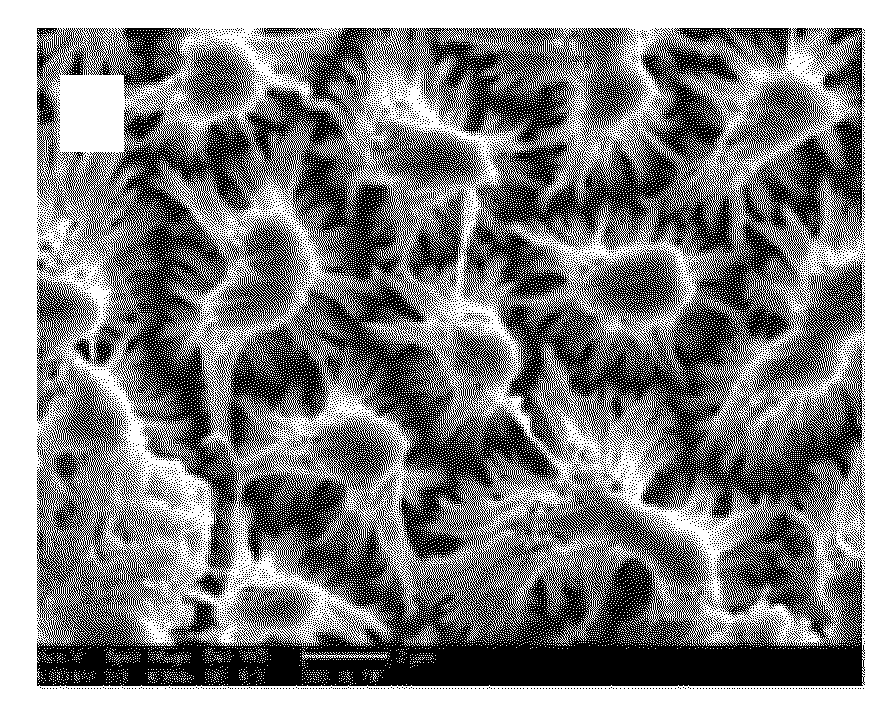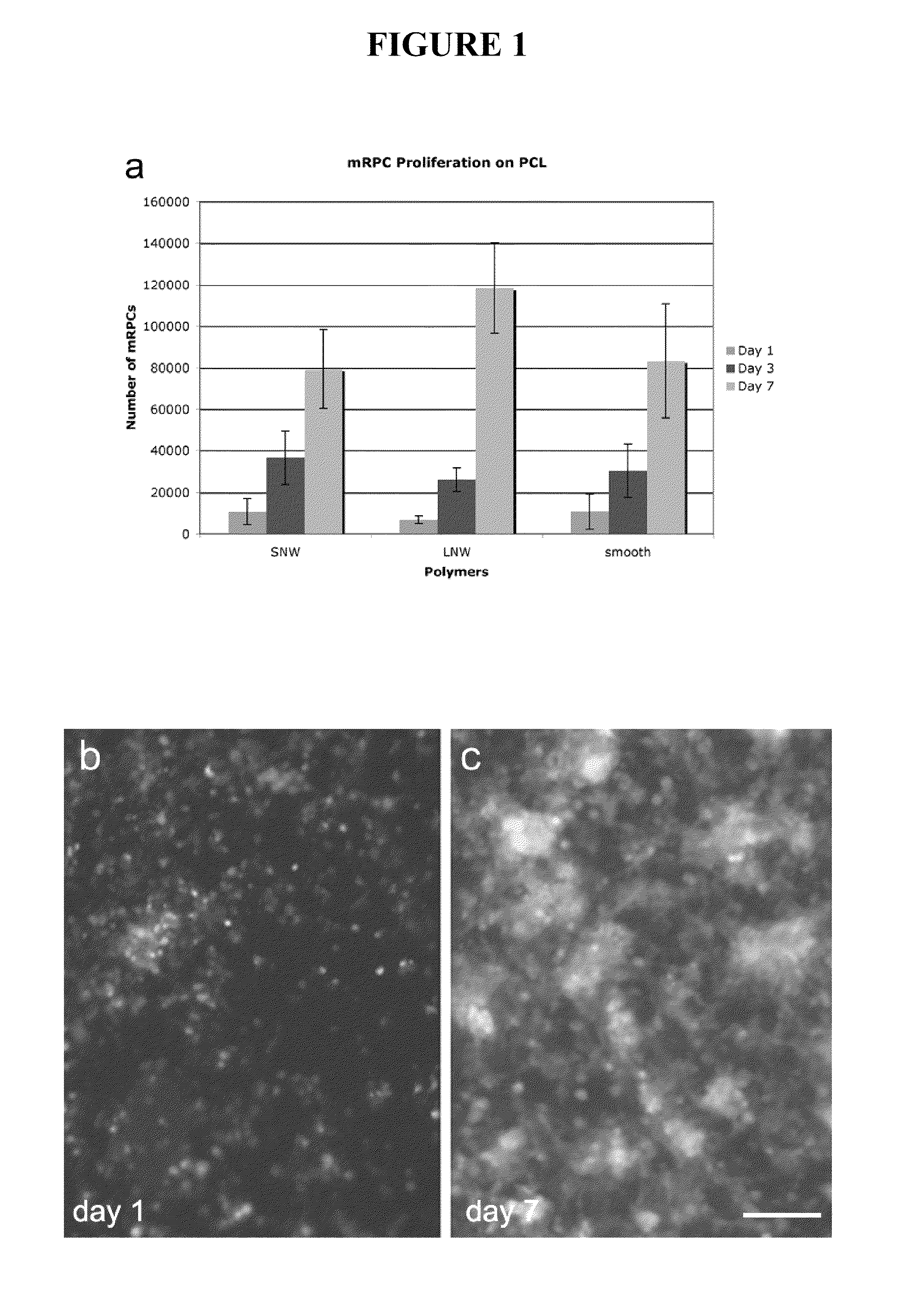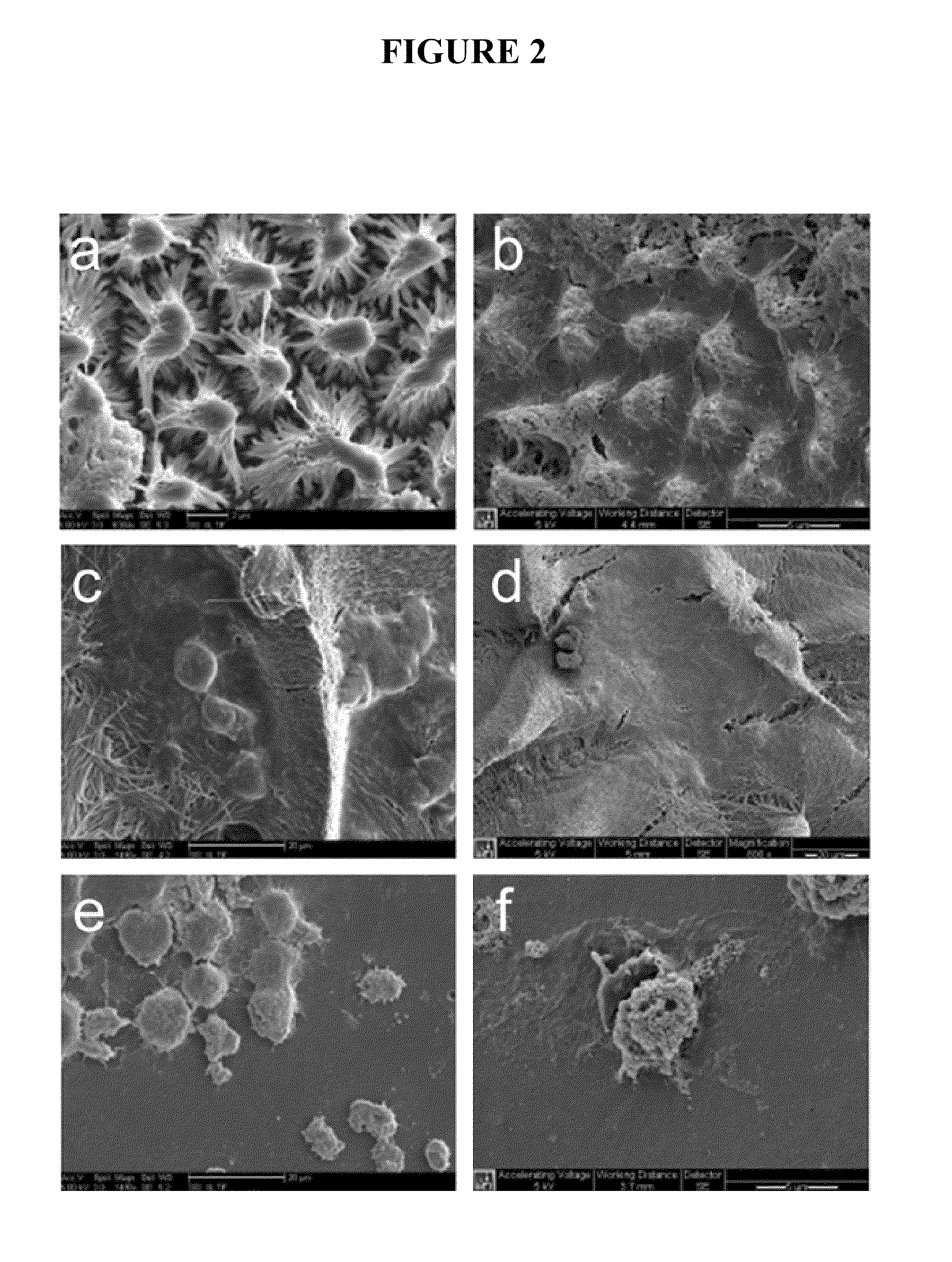Ocular Scaffolds and Methods for Subretinal Repair of Bruch's Membrane
a technology of ocular scaffolds and membranes, applied in the field of ocular scaffolds, can solve the problems of recurrence of vessels, limited treatment options, and inability to treat the retinal pigment epithelium (rpe) restoration treatment,
- Summary
- Abstract
- Description
- Claims
- Application Information
AI Technical Summary
Benefits of technology
Problems solved by technology
Method used
Image
Examples
example 1
Ocular Scaffolds
[0036]A number of advances have resulted from recent efforts to repair retinal tissue damaged by disease. Age-related macular degeneration and retinitis pigmentosa are two examples of diseases in which there is loss of photoreceptor cells. While the adult mammalian retina lacks the ability to spontaneously regenerate, a growing body of evidence supports the hypothesis that retinal tissue can be replaced and some degree of functional recovery regained following the delivery of retinal progenitor cells (RPCs) to the subretinal space (1-2). Subretinally transplanted progenitor cells have the capacity to migrate into the adult retina by following the radially oriented resident glial cells (3). However, studies using subretinal cell injection lose high percentages of RPCs due to cell death and efflux during the transplantation process (1, 4). In recent work, it was demonstrated that the delivery of RPCs on polymer scaffolds results in significantly higher survival of tran...
PUM
| Property | Measurement | Unit |
|---|---|---|
| Thickness | aaaaa | aaaaa |
| Width | aaaaa | aaaaa |
| Length | aaaaa | aaaaa |
Abstract
Description
Claims
Application Information
 Login to View More
Login to View More - Generate Ideas
- Intellectual Property
- Life Sciences
- Materials
- Tech Scout
- Unparalleled Data Quality
- Higher Quality Content
- 60% Fewer Hallucinations
Browse by: Latest US Patents, China's latest patents, Technical Efficacy Thesaurus, Application Domain, Technology Topic, Popular Technical Reports.
© 2025 PatSnap. All rights reserved.Legal|Privacy policy|Modern Slavery Act Transparency Statement|Sitemap|About US| Contact US: help@patsnap.com



